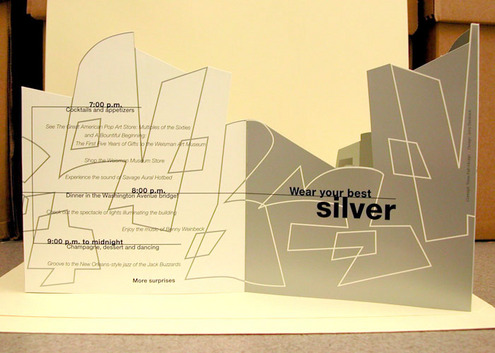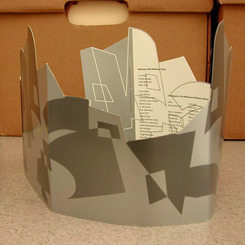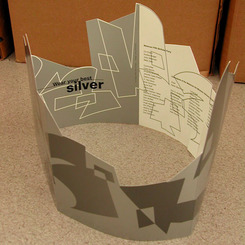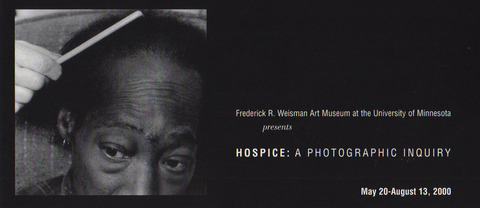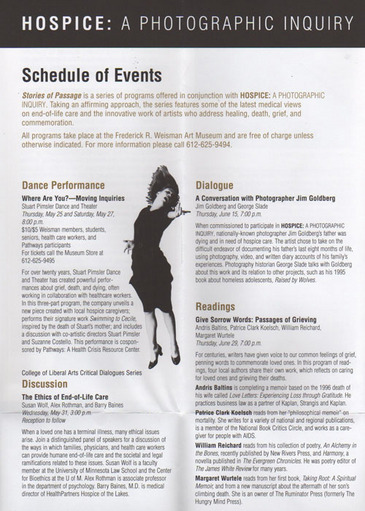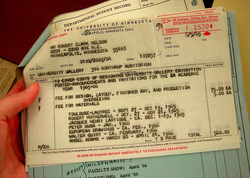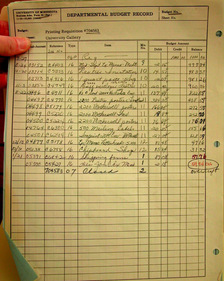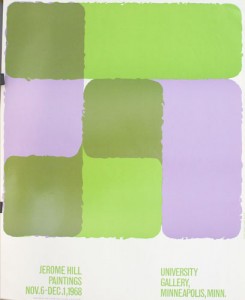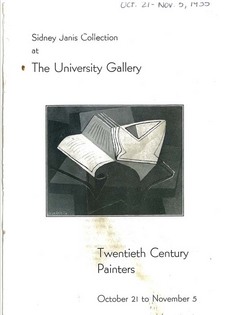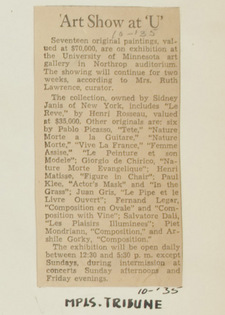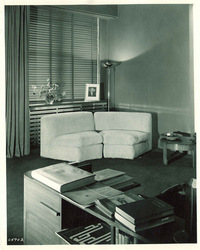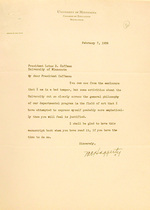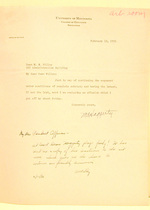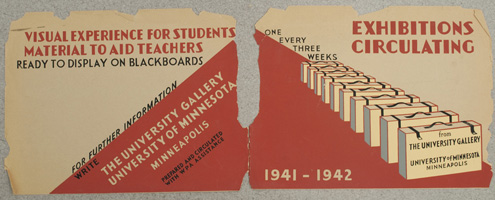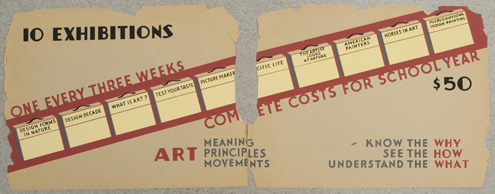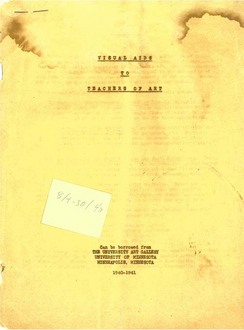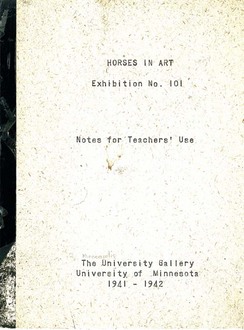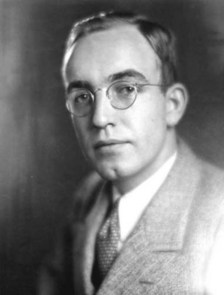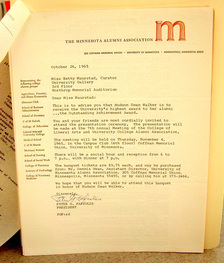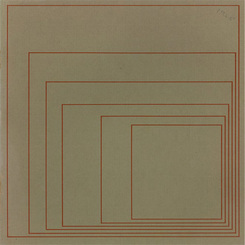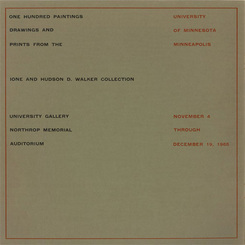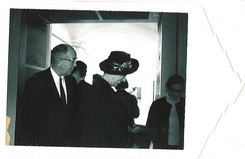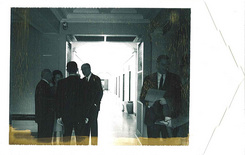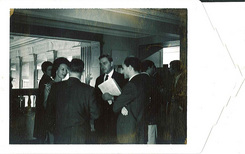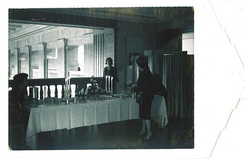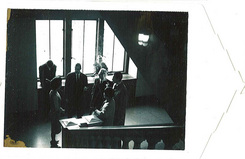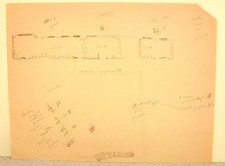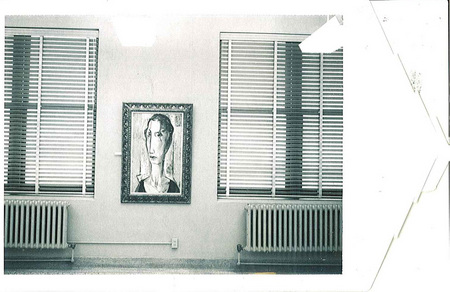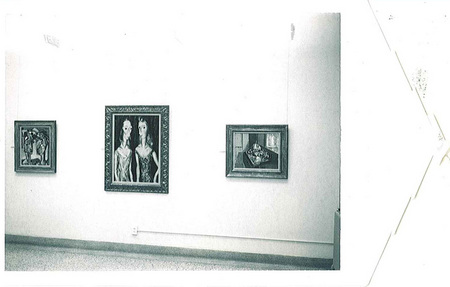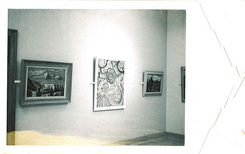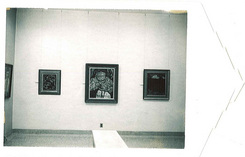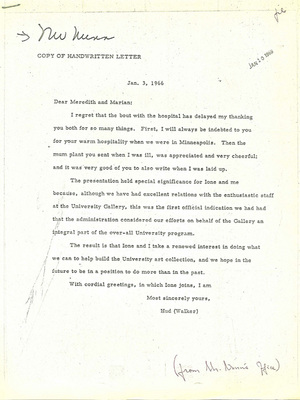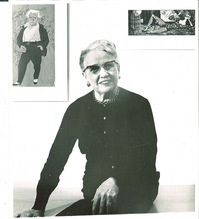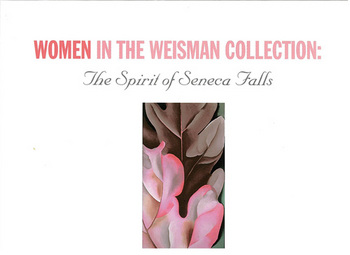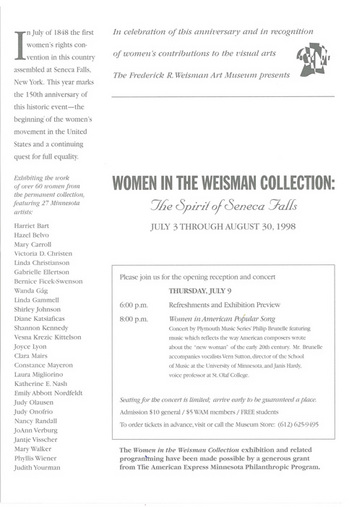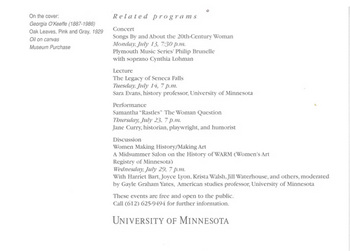This upcoming weekend marks the 19th anniversary of a big and important weekend in the history of WAM: the dedication and opening of the Frank Gehry designed Frederick R. Weisman Art Museum building. The building was dedicated on Thursday, November 18, 1993 with a ribbon cutting ceremony. Open Houses were held on the 19th and 21st for the University community and general public, respectively. A grand opening gala – with namesake Frederick R. Weisman and architect Frank Gehry in attendance – was held on Saturday evening, November 20th.
The September/October 1993 issue of Minnesota Magazine, a publication of the University of Minnesota Alumni Association, previewed the then new building in a feature article titled, “Both Sides Now.” Author Pamela Lavigne began her article: “Where once stood a sleepy little hill topped by a small parking lot on the Twin Cities campus, now there’s this… structure that causes the average viewer to exclaim, What the heck is that?!”
For just shy of 20 years, many visitors to the University of Minnesota have uttered the same question, and it is likely that no two visitors have shared the same reaction. Whether you are an art or architecture enthusiast, University student on assignment, or a community member on a casual weekend walk in search for a bathroom and/or drinking fountain, the building – and the contents within – provide many things to many people, which in itself deserves celebration. Throughout the years, WAM has always found an occasion to celebrate, and the archives contain the evidence of the museum’s many commemorations…
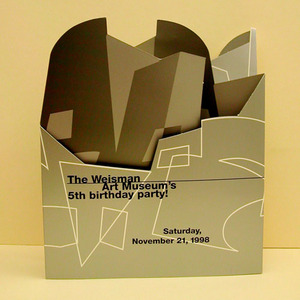 An invitation to The Weisman Art Museum’s 5th birthday party! on Saturday, November 21, 1998 was designed to be multi-functional, and served not only as an announcement, but also as an accessory. The invitation, when opened, revealed the details of the celebratory event: cocktails and appetizers, the opportunity to see the exhibitions The Great American Pop Art Store: Multiples of the Sixties and A Bountiful Beginning: The First Five Years of Gifts to the Weisman Art Museum, music, dinner in the Washington Ave. Bridge, and champagne, dessert, and dancing. It also informed attendees to “Wear your best silver.”
An invitation to The Weisman Art Museum’s 5th birthday party! on Saturday, November 21, 1998 was designed to be multi-functional, and served not only as an announcement, but also as an accessory. The invitation, when opened, revealed the details of the celebratory event: cocktails and appetizers, the opportunity to see the exhibitions The Great American Pop Art Store: Multiples of the Sixties and A Bountiful Beginning: The First Five Years of Gifts to the Weisman Art Museum, music, dinner in the Washington Ave. Bridge, and champagne, dessert, and dancing. It also informed attendees to “Wear your best silver.”
On the inset, instructions were provided that revealed the second function of the invitation:
Directions for wearing party hat:
- Unfold invitation into circular shape (side without words faces out)
- Adjust tabs to fit (cross tabs so that ends face inward)
- Wear party hat to party November 21!
This year, WAM celebrated a little earlier than it’s official birthday date, when it held the first annual fundraiser gala at the end of October: The Big WAM Bash. In case you missed the Bash, the months of November and December are still full of party hat worthy events and programs: Weekends with the Weisguides, WAM Chatter, Be Dazzled. Now that the first snow of the season has fallen, put on your coat and hat (stocking or party), join the celebrations, and discover what the heck is going on at WAM.
